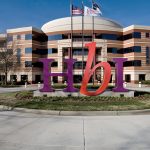The Timberland Company saw the fourth quarter of 2007 as the culmination of “a very challenging and disappointing year” for the company. Weak retail market conditions were cited as an issue that exacerbated fashion shifts away from the brand. Management said that despite the headwinds that caused profits to drop and full-year revenue to decline for the first time in the company's history, they were making “significant progress” toward rightsizing the business. Still, company chairman and CEO Jeffrey Swartz declined to offer a timeline for that planned turnaround.
Fourth quarter global revenues decreased 9.3% to $442.7 million as declines in U.S. and International constant dollar revenues offset benefits from favorable foreign exchange rate changes. Excluding the FX benefits, which accounted for 2.6% of the revenue increase, revenues would have declined nearly 12% for the period.
Global footwear revenues decreased 14.1% to $304.4 million for the quarter as greater-than-anticipated declines in boots and kid's sales offset moderate growth in casual and PRO footwear, as well as upside from the iPATH acquisition. Global apparel and accessory revenues grew 2.6% to $133.5 million in Q4 as growth in SmartWool, the addition of Howies, and benefits from favorable exchange rates offset declines in Timberland branded casual apparel.
Global wholesale revenues decreased 14.9% to $289.3 million. Global direct-to-consumer revenues increased 3.4% to $153.4 million as benefits from global door expansion and favorable exchange rates offset a 6% decline in comparable store sales for the period.
Timberland's U.S. sales fell 17.3% to $258.6 million for the quarter, with U.S. wholesale revenues falling 21.7% to $177.9 million and direct-to-consumer revenues declining 5.6% to $80.7 million. Management said that greater-than-anticipated declines in boots and kids footwear, decreases in Timberland branded apparel and moderate declines in men's casual and outdoor performance footwear were responsible for the wholesale decrease. Those declines offset double-digit gains in SmartWool, “solid growth” in Timberland PRO, and the influx of iPATH revenues. The U.S. retail revenue decline was due primarily to a 9% decline in comp store sales.
While other brands are moving to add more owned-retail to their mix, TBL is heading in the other direction. The company has decided to close the majority of their U.S. specialty stores by the end of the 2008 second quarter. At the same time, they are testing a new smaller format, with two new stores open in the Boston area and the conversion of the Garden State Plaza New Jersey store to this new format.
International revenues, benefiting from the weaker dollar, increased 5.0% to $184.1 million for the quarter, but decreased 2.2% in constant dollars. Europe revenues decreased 3% on a constant dollar basis as “anticipated” pressure on boots and kids footwear, as well as moderate declines in outdoor performance footwear, offset gains in Timberland, SmartWool apparel and accessories, and benefits from the addition of Howies. TBL said that European results reflected declines in most major European markets, offsetting strong growth in distributor-operated markets. Asia sales declined 3% on a constant dollar basis, due primarily to declines in Japan, Taiwan and Malaysia, offset by gains in key distributor markets, including China. The company said they continue to expand Timberland's global brand franchise in Asia with “a particular focus on China.” TBL has opened 58 wholesale doors in China and suggested they were “pleased” with the progress.
Gross margins declined 130 basis points for the quarter to 45.3% of sales, which management said reflected “unfavorable impacts from lower boot sales in the U.S. and Europe, increased levels of off-price sales and markdowns and higher comparable product costs.”
Fourth quarter net income fell by 33.4% to $24.1 million, or 40 cents per diluted share, for the period.
For 2008, TBL is targeting low-single-digit revenue declines, operating expenses in the range of $550 million and flat to modest operating margin improvement compared with 2007 comparable results. They see cuts in the operating expense structure offsetting “continued soft market trends.” The forecast excludes approximately $6 million in restructuring charges that are related to the final closure of stores in the first half. The full restructuring impact of store closures is estimated to be approximately $16 million, or $1 million below initial estimates.
>>> Have to wonder why other Outdoor brands are flying high right now and owned-retail is all the rage














